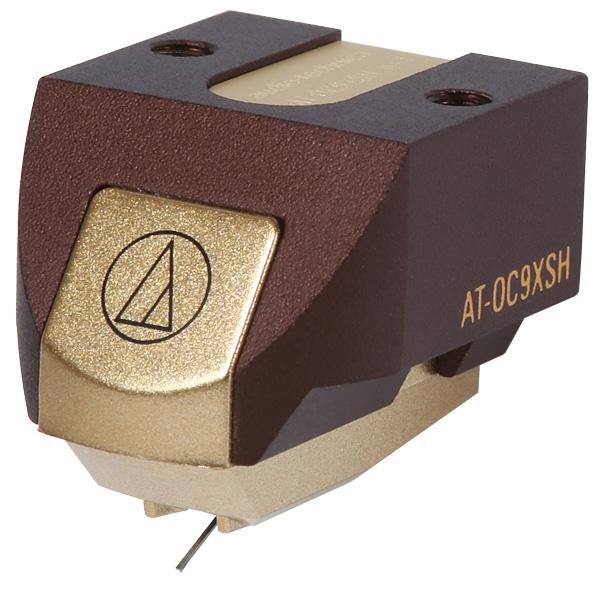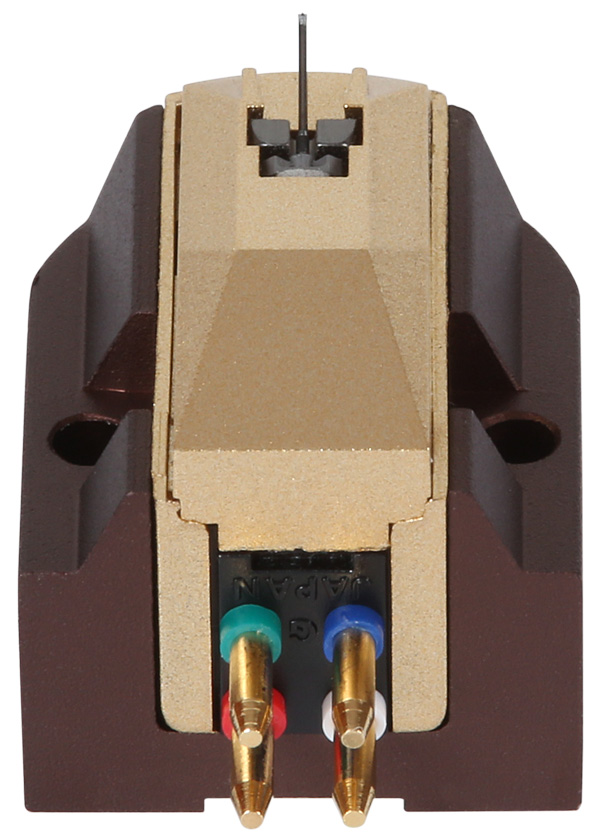Audio-Technica AT-OC9XSH Cartridge

 In production for over three decades, A-T's iconic 'OC9 moving-coil has evolved into a broad series to service the vinyl revival. We test the 'prince' of the new generation
In production for over three decades, A-T's iconic 'OC9 moving-coil has evolved into a broad series to service the vinyl revival. We test the 'prince' of the new generation
None of us needs reminding that the enthusiasm for vinyl continues apace. Yet while manufacturers of turntables and tonearms were quick to serve this revitalised market, makers of pick-ups have taken a little while longer to catch up.
One of the most prolific cartridge manufacturers in recent years has been Audio-Technica. Not content with launching a new £4450 flagship MC design – the AT-ART1000 – and no fewer than three new ranges of MM models, the company has now decided to turn its attention to one of its best-selling designs: the AT-OC9.
Perhaps what is most surprising here is that the makeover for this well-loved cartridge has not arrived in the form of a single replacement. Rather, it comes as a whole new lineup of five models, ranging in price from £210 to £660, with the AT-OC9XSH reviewed here being the penultimate model in the series at £570.
Cosmetically the new cartridges can be identified by the different finishes chosen for their bodies, and technically by their stylus and cantilever configurations. Additionally, the bottom two and top three models in the series feature different generator materials.
Walking The Line
The range begins with the £210 AT-OC9XEB, resplendent in a blue finish and sporting a bonded 0.3x0.7mm elliptical stylus on an aluminium cantilever. An extra £90 buys you the AT-OC9XEN finished in silver with the same cantilever but a nude elliptical stylus tip. Next up is the red £480 AT-OC9XML, which might be considered the natural successor to the AT-OC9ML/II thanks to its 2.2x0.12mm microlinear stylus and 0.28mm diameter boron cantilever. Skipping past the AT-OC9XSH briefly, we arrive at the black AT-OC9XSL, with its 1.5x0.28mm line-contact stylus.
The AT-OC9XSH is finished in a smart metallic brown and uses the same boron cantilever as its immediate stablemates, but with a 2.7x0.26mm Shibata stylus. Like the XML and XSL versions, the XSH has a generator based around a neodymium magnet with a permendur yoke (the XEN and XEB make do with a more standard iron yoke). Permendur may be a new name to some, but it's an alloy that comprises equal parts cobalt and iron and has been around since 1920. Its advantage over iron is its higher magnetic permeability and Audio-Technica exploits this property to improve the magnetic field within the coil gap. The claimed results are detailed on its spec sheets, the permendur-based designs offering quoted output voltages of 0.4mV, compared to the 0.32/0.35mV of the iron-based designs.

In other respects, the generators of each cartridge are similar, with the cylindrical PCOCC-wired coils arranged in the reverse V-shape formation Audio-Technica has used since the model's introduction in 1987. This, and a reduced cantilever/stylus tip mass, fuel claims of a wider frequency response and improved stereo imagery. Finally, the hard resin cartridge body and sturdy aluminium frame have a curved shape that descends into parallel sides, which help with your initial set-up.
Finishing Touches
Also new for the range are tapped fixing holes, so bolts and external nuts are no longer required. Those few headshells that accept fixings only from underneath will not be compatible with these new models, but for most vinylistas fitting these new cartridges will be much easier. I have owned an AT-OC9ML/II for years and finding screws long enough to protrude sufficiently but not so long that they foul the stylus guard – or even hit the record – has proven to be a tricky juggling act on occasion!
Talking of headshells, the company has also taken the opportunity to accessorise the new series with a range of three matching models. Sadly only available in black, they have two sets of fixed mounting holes rather than slots and, if you use the front ones, the slope of the front of the headshell aligns and matches perfectly with the slope on the front of the cartridge body, which is pleasingly stylish. Called the AT-LH 13H, 15H and 18H, they weigh 13g, 15g and 18g respectively and cost an extra £80 each.
As a finishing touch, the AT-OC9XSH's packaging is first-class and suitably swish, and the cartridge is supplied with manual, test certificate, screwdriver, cleaning brush and a selection of mounting screws. The stylus protector is the same as that found on the older models, but the cartridge no longer comes fitted to a fake 'headshell' that holds it in mid-air in the box. Instead, it is pushed into a cut-to-shape foam block. While this does hold the pick-up securely, it has a tendency to leave the stylus guard behind when you remove the cartridge. Take care when you first unpack!
For review, the AT-OC9XSH was fitted to an SME 309 arm on a Michell Gyro SE turntable and plugged into an Anatek MC-1 phono stage, providing a fixed 100ohm load. This fed my Naim Supernait amp and PMC Twenty5.24 speakers [HFN May '17].
![]() Trump Card
Trump Card
Before cueing up the newcomer, I spent a few hours re-acquainting myself with my own AT-OC9ML/II. On switching to the AT-OC9XSH, I was pleased to note that Audio-Technica has resisted the urge to alter the cartridge's basic tonal balance. Anyone who already likes the ML/II will, I suspect, love the XSH but I would also wager that there are aspects of its character likely to win it new fans.
























































